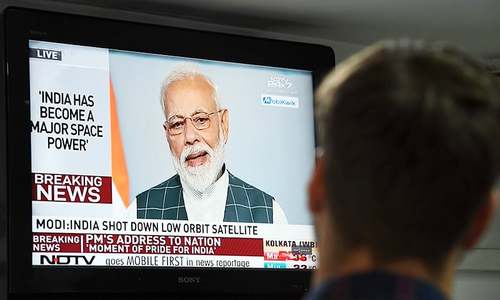TAMPA: Acting US Defence Secretary Patrick Shanahan said on Thursday he expected debris from an Indian anti-satellite weapons test to eventually burn up in the atmosphere instead of creating a lasting debris field that could threaten other satellites.
Asked about comments by India’s top defence scientist that the debris would burn up in 45 days, Shanahan said he could not confirm any particular timeframe.
“But in terms of threats to other objects, that’s consistent with what I’ve heard,” that it will burn up in the atmosphere, Shanahan told reporters travelling with him in Florida.
The comments came a day after India said it used an indigenously developed ballistic missile interceptor to destroy one of its own satellites at a height of 300 km (186 miles), in a test aimed at boosting its defences in space.
In 2007, China destroyed a satellite in a polar orbit, creating the largest orbital debris cloud in history, with more than 3,000 objects, according to the Secure World Foundation.
Since the impact altitude exceeded 800 km (500 miles), many of the resulting scraps stayed in orbit.
Asked whether he believed India, with a test at a lower altitude, had avoided a China-type scenario, Shanahan said: “That’s my understanding.”
The Pentagon said on Wednesday the US military’s Strategic Command was tracking more than 250 pieces of debris from India’s missile test and would issue close-approach notifications as required until the debris enters the Earth’s atmosphere. Lieutenant General David Thompson, vice commander of US Air Force Space Command, said that the Indian test had hit the target vehicle.
A US official said on Thursday that no new threats had arisen from debris yet.
The official added that there was no information so far to cast doubt on the claims made by Indian Prime Minister Narendra Modi. Critics say such technology, known to be possessed only by the United States, Russia and China, raises the prospect of an arms race in outer space, besides posing a hazard by creating a cloud of fragments that could persist for years.
Shanahan said the Indian test was a reminder about how space was becoming increasingly contested, and underscored the necessity of creating a Space Command - a stepping stone toward President Donald Trump goal of creating a Space Force.
Published in Dawn, March 29th, 2019














































